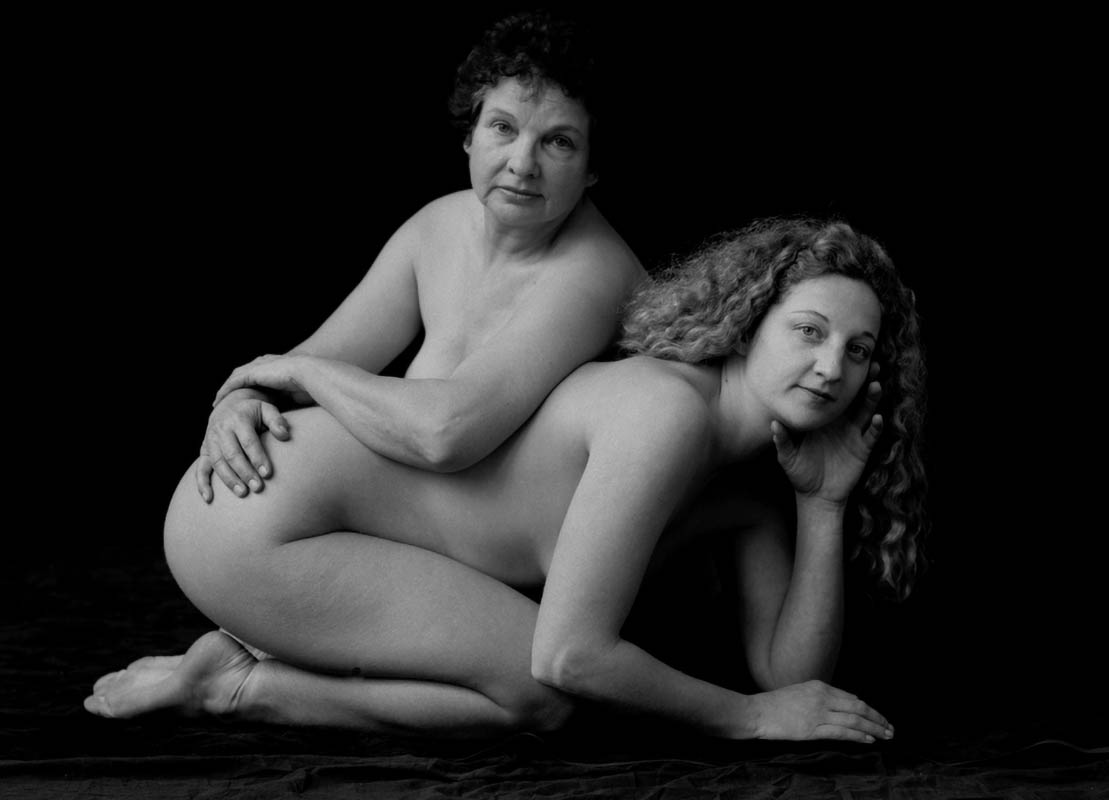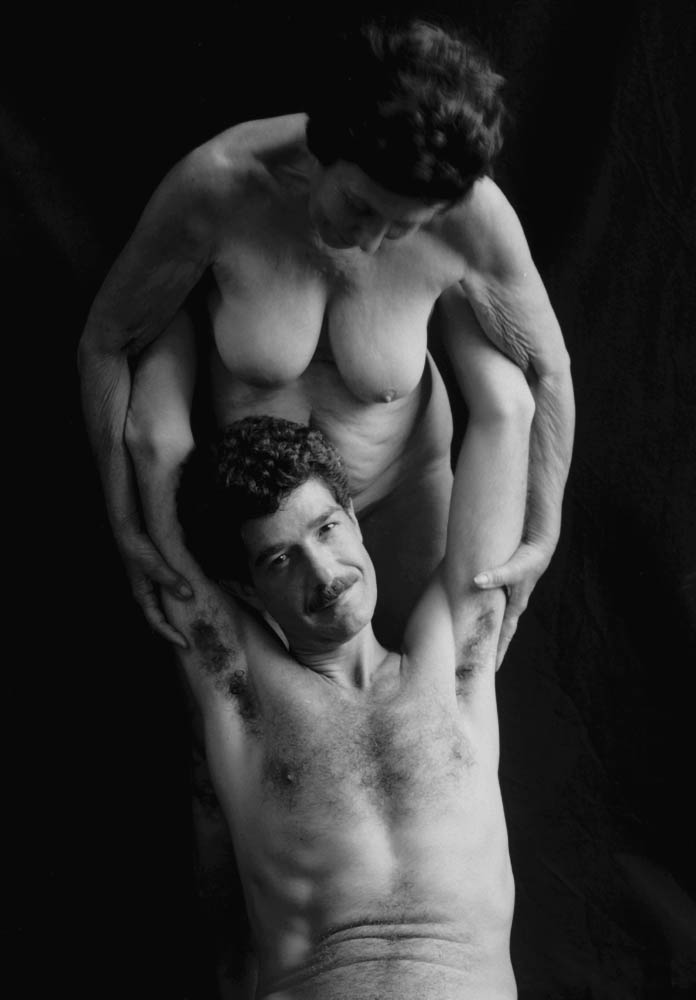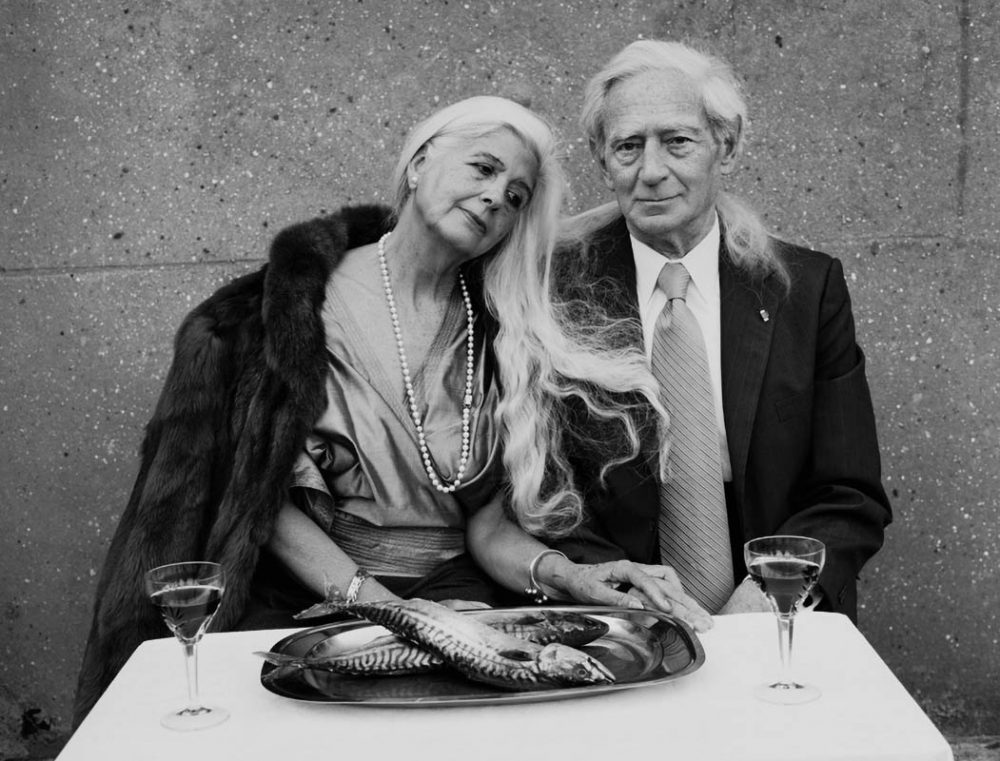What holds people together?
“Bloodties & other bonds” from Diana Blok
When I saw the photos from the series, “Bloodties & other bonds” from Diana the first time, I was very touched by them. I found them accidentally in a German weekly magazine; I think it was the Stern. It must have been in the end of the 80’s. Let’s say, the photos picked me up in an emotional but also an intellectual way. The title, “Blutsbande” was confronting. The few photos that were squeezed on the magazine page caused an irritation in me, but in a positive way: black and white photos with hard contrasts in a time when the weekly, Stern (Geo), powered photographers to make reportage photos in brilliant colors. These photos – obviously produced in a studio - reminded me of family photos that I found in my grandmother’s photo album. Also these photos of people from the series, “Blutsbande” had been carefully arranged by a professional photographer in a studio – some-times with a touch of a décor – and similar to the old style photos from my grandma, my mother and her brother looking straight in the eyes of the spectator. But in contrast to my family photos, in the photo series of “Blutsbande” there was not a stiff body language because they were portrayed naked as in the tradition of act-photography.
What touched me was somehow a quiet and subtle communi-cation between the people in the scene and with the spectator. Challenging was the title, “Bluts-bande”, it was asking a lot: was it really the family blood that holds these persons together? Or sexu-al attraction between a heterosexual couple? Or parenthood and affiliation? Obviously not. It seemed that the people were connected but not fitting into obvious patterns: two women looking into each other’s eyes could be seen as friends or sisters or as a lesbian couple. The bond between them was not obvious. At that time I just had finished my study as a pedagogue and I started to work with young people between 14 and 18 years old that lived in a house of residential care. Most of them were abandoned by their parents or had difficult relationships with them. These experiences had violated their trust in relationships. The daily life with the children and the remembrance of the photos of “Blutsbande” from Diana Blok, confronted me with the question: What holds people to-gether? I can’t remember if I had found an answer at that time.
Meanwhile 20 years later as a professor of Socialpedagogy at the University of Dortmund, I showed my students in my seminar photos from the series, “Bloodties and other bonds” and asked them the same questions that I was confronted with when I took care for the children in residential care as a social worker. From a didactic and pedagogic point of view, this arrangement was very fruitful as the photos and the question opened the floor for “top down” interpretations based on a wide range of theoretical approaches, mostly sociological: Ulrich Becks’ theorem of individualization and pluraliza-tion of life situation especially family forms; Norbert Elias’ term of social “figuration”, that in modern societies humans create and negotiate small societies with common-shared responsibilities; the the-orem of doing and displaying family; or the approach of inter-corporeality (intercorporéité) by Mau-rice Merleau-Ponty. Although these are fantastic approaches to interpreting these portraits, they left the same question unanswered: What holds people together? I taught my students that it is more the aesthetical experiences that will lead them “bottom up” to an answer. I asked them to express their experiences in writing.
While I am writing this article, I had again a look at the portraits… and honestly I am still touched by them. They now give me some kind of answer to my question, “what holds people together”: the bodily expressed gestures of care, as a tender touch on the shoulder, holding a child by the hand or carrying a person in one’s arms. They remind me of when we made photographs during family gath-erings and the happiness we shared: it’s the common shared moment in front of a camera, especial-ly the joint creation of a characteristic group, the mutual posing and the shared joy after the click of the camera that give us the feeling of a bond. And if I take that photo in my hands, it will remind me of this situation and bring back a breath of happiness. But the photo also offers us this exceptional moment as a memento mori.
Prof. Dr. Uwe Uhlendorff
Professor of Sociology and Psychology
Educational Science department, Technische Universität Dortmund, Mai 2019
‘Young, dynamic, self-taught and a tireless traveler with thirst for adventure, Diana Blok, the daughter of a Dutch diplomat, was able to unleash her dreams through photography. Her series of nudes that Diana & Marlo ( collaboration with Marlo Broekmans) sign together earned them worldwide recognition. Later she demonstrated her genius individually with Blood ties and other Bonds exhibition presented in the Photography Gallery of the Teatro San Martín in Buenos Aires, 1987 together with carefully edited publication. The work depicts relationships full of mystery between parents, brothers, sisters and friends, faced with a certain ambiguity that oscillates between the psychological and the humanistic.’
Sara Facio
Argentina’s most well known living photographer, author and curator of the photography collection of the Nacional Museum of Fine Arts in Buenos Aires.


















